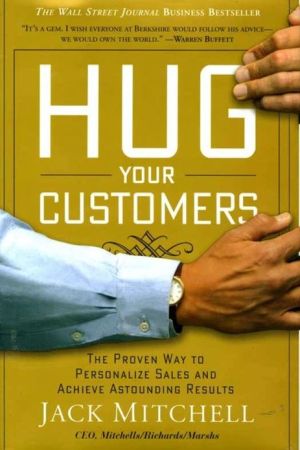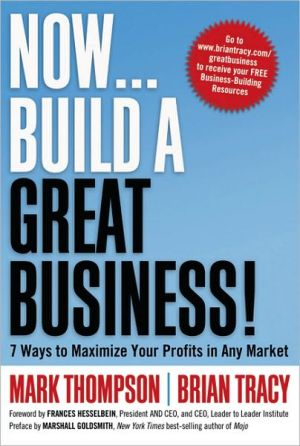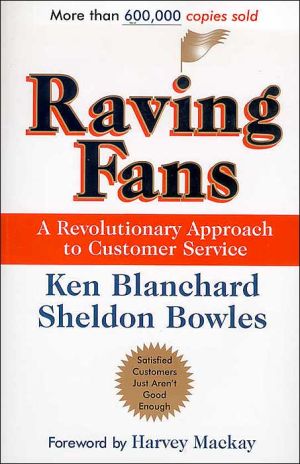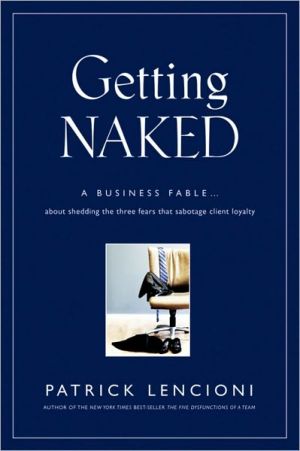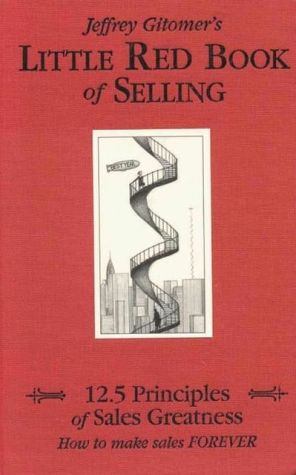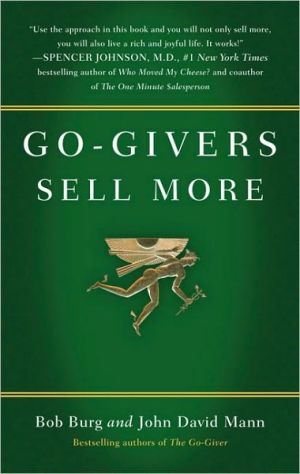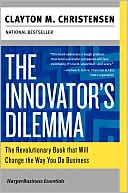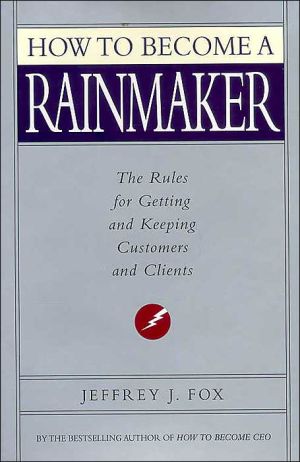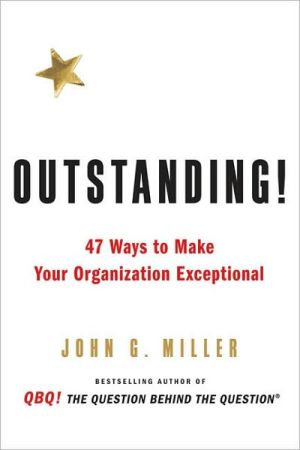Hug Your Customers: The Proven Way to Personalize Sales and Achieve Astounding Results
A master of customer service reveals his secrets for developing long-lasting business relationships and customer loyalty. "We shower our customers with attention. There's no doubt in my mind that our philosophy can be applied to selling just about anything — from aircraft engines to beanbags." (Jack Mitchell) The only way to stay in business is with customers, and Jack Mitchell knows how to attract them, and how to keep them.\ He has a deceptively simple but winning relationship approach to...
Search in google:
UG YOUR CUSTOMERS is about customer service and how Jack Mitchell has practiced it by extending hugs -- unexpected extras, from knowing each customers name, along with their family members and clothing preferences, to handing out free coffee and newspapers on the Greenwich commuter train platform to say thanks (and by extension Shop at Mitchell David Komansky They have been a beacon — and a leader — in developing sincere and deep relationships with clients.
It's funny how an offhand comment at the right moment can end up crystallizing a lifetime's worth of learning. That's sort of what happened to me.\ I run Mitchells/Richards, a profitable high-end clothing business in Connecticut that was founded in 1958. Today we do over $65 million in sales. A few years ago, I was invited to be a panelist at a conference that Fairchild Publications sponsored for chief executive officers in our apparel industry. The conference was held at a resort in the pleasantly named city of Carefree, Arizona. Not many of the attendees, however, were feeling especially carefree. There had been almost relentless bashing of the retail industry, and it was getting everyone down. Department storeswere struggling mightily against discounters, dot comers were going to change the retail world, and people were complaining that customer service was truly dismal. The topic of the panel discussion I was on pretty much summed up the somber mood: "Apparel's Black Hole."\ But it didn't sum up my mood. It's a rare day that you'll find me anything but ebullient. It's just the way I'm built. Glasses are never half empty to my eye; they're five-eighths full. Many times, they're full or overflowing. Even before the panel members were introduced, one of the keynote speakers and organizers of the event, in remarking on the decline in customer service, said that he doubted many of the several hundred executives in attendance even knew who their top one hundred customers were. He asked for a show of hands: Who knew their top hundred customers? My hand shot up. When I looked around, I couldn't see anyone else with a hand raised.\ I was actually a little embarrassed to have my hand waving in the air, but mainly taken aback that no one else knew such basic and valuable information about their business. When I'm bored at home, rather than reading a book, I often punch the button on my computer and put in parameters to pull up our top one hundred or top one thousand customers, men and women, and I study them like I was studying vocabulary words for the SATS. The names go into one of the attic rooms of my brain and lodge there. As I once knew all the stats on Joe DiMaggio and Mickey Mantle, I now try to know all the stats on my top thousand customers. Because that's the game: knowing the customer.\ Once the panelists were introduced, we were each allotted seven minutes to say something insightful on the topic of "the black hole." My take was quite a bit different from the others. The first thing I said was that I viewed retailing today not as a black hole but as a volcano. I saw it as a combination of energy, light, heat, and good things to come from the explosion. The trick was having the proper approach. I mentioned how astonished I was that my peers didn't know their top hundred customers. I said -- hopefully without sounding pompous -- "I know my top one thousand customers." I told how at Mitchells everyone from the sales associate to the tailor to the delivery person concentrated on the customer, and in doing so we got remarkable results. I was thinking of all the customers we have that spend $5,000 a year, year after year, at our stores, about the customers that spend $20,000 a year and those that spend $100,000. We even have a few that spend $250,000. That's right, $250,000 a year on clothes at our stores. I was thinking about how we embrace every customer with a friendly greeting and a smile. I thought about the two dozen sales associates who write at least $1 million a year in business. It used to be unheard-of for anyone to do $1 million, but now we expect that the first year someone joins us. We even have five associates who write $2 million, and one who writes an unthinkable $3 million -- in a town of 28,000 people! That's a lot of suits and dresses, and we sell them one at a time. One customer at a time.\ I went on to relate some of the stories about the elaborate and at times adventuresome extents we go to in order to exceed the expectations of our customers. Once I had exhausted my seven minutes, I was really pumped. I get that way when I talk about our business. I returned to my table, and one of my tablemates, thinking over my anecdotes, smiled at me and said, "Oh, sure, Jack. The next thing you're going to tell us is that you and your sales associates actually hug your customers."\ I looked at him and, without blinking, replied, "Sure. Doesn't everyone?"\ And that's when it became crystal clear in my mind. Everyone didn't do what we did, and what we did was hug our customers. We were a bunch of huggers. In some instances, we physically hug the customers -- I've seen sales associates actually give customers a bear hug and then dance with them around the floor -- but we mainly metaphorically hug them by showering them with attention in a way that every business ought to but doesn't. From then on, I began referring to how we treat customers at Mitchells/Richards as "hugging" -- first to myself, then to the family and associates -- and it seemed to fit, like a great suit. Everything else we do -- like what I call "The Big Secret" and "The Formula" and "Game Day" -- springs from this simple but essential practice. Hugging, in my mind, implies passion, and without passion and commitment, customer service can never be extraordinary. People have said to me, "Jack, you are obsessed with extraordinary customer service!"\ This book is about one particular family's philosophy of selling. For three generations, my family has been dressing men and women in Fairfield and Westchester Counties, where a high concentration of top executives live and increasingly work. Our stores are less than an hour by train from New York's Grand Central Station, but we are told we're a world apart in terms of the care, time, and attention we devote to each and every customer. My parents started the business in 1958 in a former plumbing supply store with a bare-bones inventory of three suits and all the free coffee you could drink. My mother would make coffee for customers in the same pot she used to make breakfast at home, so she made sure to bring the pot home with her at the end of the day for a good scrubbing. That first year, they did $50,000 worth of sales and were thrilled.\ Nowadays, we have two stores in Connecticut, Mitchells and Richards. We do in excess of $65 million a year, and we are all thrilled to be selling suits and dresses one at a time and hugging customers. We achieve this volume in Westport, a town of just 28,000 people, and in nearby Greenwich, which has about 60,000. Roughly every other household is a customer in our system, because at some point we gave them a very pleasant and memorable shopping experience - a hug or two that made them come back for more. We've been told by others that we're one of the most successful -- if not the most successful -- high-end clothing businesses of our size in the country, and maybe in the world. It's not because of our product, it's not because of our prices -- other stores have great product at the same prices-it's because of how we personally treat customers.\ I don't think it's an overstatement to say that more than any other retailer of our size, we clothe corporate America. Our customers include the chief executives, presidents, owners, chief financial officers, division managers, and entrepreneurs of many of the companies that are household names: GE, IBM, Verizon, Coke, Pepsi, JP Morgan Chase, Gillette, Merrill Lynch, Lehman Brothers, American Skandia, Xerox, and many more. I counted it up once and found out that more than five hundred chief executives and presidents are our customers, along, with literally thousands of executives and men and women who work for their firms. We outfit quite a few film luminaries and sports stars too -- in other words, people who are successful and who care how they look. They know that clothes are extraordinarily powerful in the business world. While clothes don't really "make the woman or man," they often make a huge difference in their careers. And I'm proud to say our customers also include local firefighters and police officers who I went to school with, who like to look great, too.
\ EsquireSimple but winning approach to customer service.\ \ \ \ \ Matt LauerIt's all about service! What pleasure buying clothing from people who make you feel like family.\ \ \ David KomanskyThey have been a beacon — and a leader — in developing sincere and deep relationships with clients.\ \ \ \ \ Publishers WeeklyIf you work at a Fortune 500 company and live in southern Connecticut or New York's Westchester County (two of Manhattan's most affluent suburbs), chances are you buy your suits at Mitchells (in Westport, Conn.) or Richards (in Greenwich, Conn.). These two independent clothing stores are some of the most successful in the business and outfit CEOs from Chase, GE, IBM, Merrill Lynch and Pepsi. Mitchell, whose father started the business, shares the secret of his success in this unoriginal but cheerful guide to keeping customers happy. Hugging your customers, he says, has nothing to do with being touchy-feely around them and everything to do with offering them over-the-top service. For Mitchell, that means literally offering a customer the coat off your back, if that's the only one left in the store in the customer's size and preferred style and color. It means going to customers' homes to tie their bow ties for big events. It means serving coffee and bagels in the store and giving away hot dogs in the parking lot on summer Saturdays. Some might view this as fawning, but for Mitchell, it's the best way to keep customers coming back. His advice-know your customer, think outside the box, have a "no problem" attitude-is hardly groundbreaking. But those who work with customers daily have much to gain from this chipper, inspiring handbook. Agent, Jacques de Spoelberch. (June) Forecast: Blurbs from media and business high rollers, including Today cohost Matt Lauer, former SEC chairman Arthur Levitt and Merrill Lynch CEO David Komansky, will increase awareness, as will ads in the New York Times, the Wall Street Journal and USA Today. Copyright 2003 Reed Business Information.\ \ \ \ \ Library JournalThe CEO of Mitchells/Richards, two of the country's most successful independent clothing stores, here outlines his innovative and successful approach to merchandising and management: hugging, a mind-set that personalizes and saturates every aspect of one's business. Mitchell divides his text into eight sections of four to 11 chapters and concludes each section with a "Hugging Study Guide" that summarizes the highlights one should remember and put into practice. Among these are how to attract and keep great staff, lower marketing costs, maintain higher gross margins and long-term revenues, and adapt Mitchell's ideas to any business. Readers will enjoy Mitchell's numerous anecdotes, and the personable, down-to-earth style allows readers to absorb new ideas easily.-Susan C. Awe, Univ. of New Mexico Lib., Albuquerque Copyright 2003 Reed Business Information.\ \ \ \ \ Soundview Executive Book SummariesHug Your Customers\ The CEO of Mitchells/Richards, two of the most successful clothing stores in the business, professes his faith in showering customers with attention while offering numerous tips and techniques for satisfying customers. His secrets for long-term business success include advice about attracting great staff, lowering marketing costs, and maintaining higher gross margins and revenues. Mitchell uses colorful anecdotes from his own experiences to highlight lessons about running a successful family business. Copyright © 2003 Soundview Executive Book Summaries\ \
